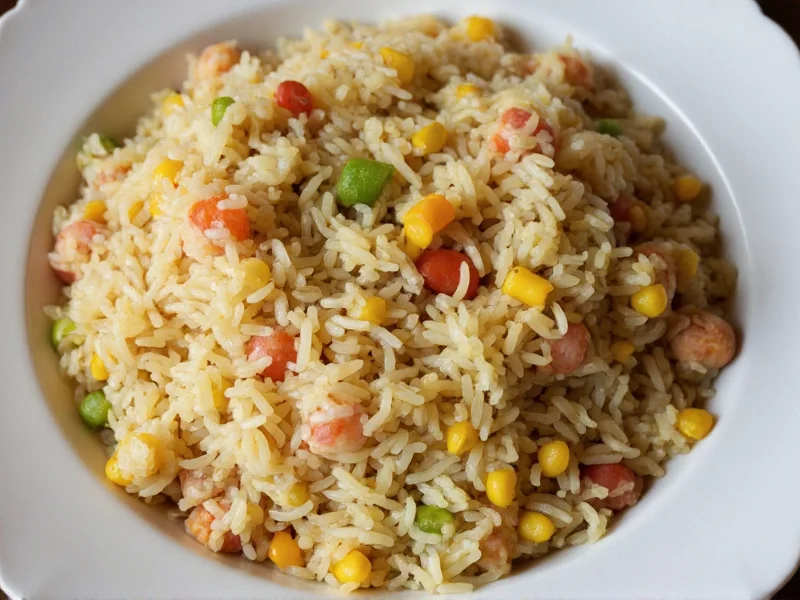When crafting authentic Spanish paella, finding the right substitute for bomba rice becomes crucial if you can't source the traditional Valencian variety. Bomba's unique ability to absorb three times its volume in liquid without becoming mushy makes it indispensable for proper paella texture. Understanding which alternatives preserve this critical characteristic separates successful dishes from disappointing ones.
Why Bomba Rice Matters in Spanish Cuisine
Bomba rice (varietal Bombon) originates from Valencia's Albufera region and possesses distinctive qualities that define authentic paella. Its short, plump grains contain higher amylose content than most rices, allowing exceptional liquid absorption while maintaining structural integrity. This creates the coveted socarrat - the caramelized crust at the pan's bottom that Spanish chefs consider paella's soul.
Without proper rice selection, your paella risks becoming either soupy or mushy. The ideal bomba rice alternative must replicate three key properties:
- Absorbs 2.5-3x its volume in broth without disintegrating
- Maintains distinct grain separation after cooking
- Develops characteristic nutty flavor when properly toasted
Top Bomba Rice Substitutes Compared
| Rice Variety | Liquid Absorption | Grain Integrity | Availability | Best For |
|---|---|---|---|---|
| Bomba (original) | 3:1 | Excellent | Moderate (specialty stores) | Authentic Valencian paella |
| Calasparra | 2.8:1 | Excellent | Moderate (Spanish markets) | Traditional paella substitute |
| Senia | 2.7:1 | Very Good | Limited (Spanish imports) | Dry paella styles |
| Arborio | 2:1 | Good | Widely available | Creamier paella variations |
| Carnaroli | 2.2:1 | Very Good | Moderate (Italian markets) | Risotto-style paella |
Calasparra: The Closest Bomba Rice Alternative
Calasparra rice, grown in Murcia's mountain springs, shares bomba's exceptional absorption capacity while developing similar flavor profiles. This authentic paella rice alternative works particularly well in traditional recipes because:
- Requires identical cooking time (18-20 minutes)
- Forms perfect socarrat when properly managed
- Available from reputable Spanish importers
When substituting Calasparra for bomba, maintain the same rice-to-liquid ratio. The primary difference appears in texture - Calasparra grains remain slightly firmer, which some chefs prefer for seafood paella.
Arborio Rice: The Accessible Substitute
For those seeking a common rice substitute for bomba, Arborio offers the most accessible option. While popular for risotto, its moderate starch content creates acceptable paella when adjusted properly:
- Reduce liquid ratio to 2:1 instead of bomba's 3:1
- Decrease cooking time by 2-3 minutes
- Add broth gradually rather than all at once
Arborio's higher starch release creates creamier results, making it better suited for seafood paella than traditional Valencian recipes. Many home cooks successfully use this substitute for bomba rice in paella when authentic Spanish rices aren't available.
Rice Varieties to Avoid as Bomba Substitutes
Certain rices fundamentally lack the structural properties needed for proper paella. Avoid these when seeking a good substitute for bomba rice:
- Basmati or Jasmine - long grains that remain separate but don't absorb properly
- Converted rice - parboiled varieties resist liquid absorption
- Brown rice - requires different cooking methods and times
- Instant rice - pre-cooked with inconsistent texture
These alternatives create fundamentally different dishes that shouldn't be labeled as paella, though they might work for rice-based meals inspired by Spanish cuisine.
Adjusting Technique for Bomba Rice Substitutes
When using alternatives to bomba rice, modify your cooking approach:
- Toast grains longer - 2-3 minutes in hot oil to enhance structural integrity
- Monitor liquid absorption - add broth incrementally with substitutes that absorb less
- Reduce heat earlier - prevent overcooking with faster-absorbing varieties
- Rest covered - 5 minutes after cooking allows final moisture distribution
Professional chefs recommend testing your bomba rice substitute with a small batch first. Note how quickly it absorbs liquid and adjust future preparations accordingly. The ideal paella rice should feel tender yet distinct between your fingers when properly cooked.
Finding Authentic Bomba Rice Alternatives
Specialty food stores increasingly carry Spanish rice varieties beyond basic bomba. Look for these where to buy bomba rice substitutes options:
- Spanish import markets (physical and online)
- Gourmet food retailers' international sections
- Reputable online specialty food purveyors
- Some larger supermarket chains' premium product lines
When purchasing, check packaging for Denominación de Origen (D.O.) certification, which guarantees authentic Spanish origin. This ensures you're getting a legitimate substitute for bomba rice rather than generic short-grain alternatives.











 浙公网安备
33010002000092号
浙公网安备
33010002000092号 浙B2-20120091-4
浙B2-20120091-4